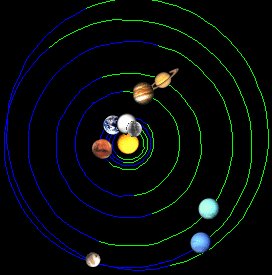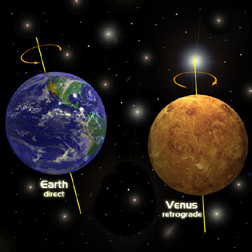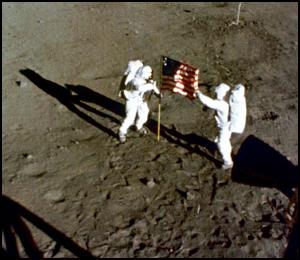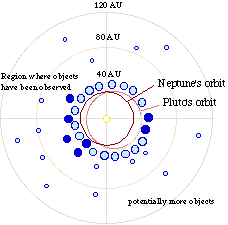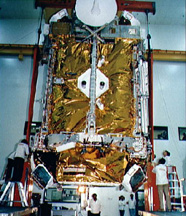Click on image for full size
Image courtesy of Solar System Live, which was implemented by John Walker and is Copyright © 1989 by Jef Poskanzer
How far is the Earth from the Sun, the Moon and all the other planets? How far are all of the planets from the Sun? Do you know of a software that tracks the planets in real-time?
There is a really neat internet program called Solar System Live that shows the position of all of the planets and the Sun for any given day. If you go to that page, you'll see an image similar to the one on the left. I always change "Show" to "images", because sometimes it's easier to see a picture of the planets instead of its symbol. I also change "Size" to "640" for a larger picture (then hit "Update").Down below the image produced, you'll see the distance from the Sun, the Moon and all of the planets to Earth. It's given in the measure of an A.U. (Astronomical Unit) (except for the Moon's distance to Earth which is given in the measure of Earth radius where one Earth radius is 6,376.5 kilometers).
So, let's take an example. It says that today Saturn is 8.833 A.U. away from Earth. To get that distance in kilometers, multiply the A.U. distance by 149,600,000. To get that distance in miles, multiply the A.U. distance by 93,000,000. So Saturn is 1,321,416,800 kilometers from Earth (8.833x149,600,000) and 821,190,000 miles from Earth today (8.833x93,000,000). The same set of calculations can be done for all of the planets.
The minimum and maximum distance of the planets from the Sun is given on their planetary facts pages: Mercury, Venus, Earth, Mars, Jupiter, Saturn, Uranus, Neptune, Pluto.
Submitted by Robert (Maine, USA), Erin (Michigan, USA), Randy, Kate (England), Miss Holts' elementary classroom, Lorna (England), Tara (Georgia, USA), Colleen (Colorado, USA), Edith (Virginia, USA)
(January 30, 2001)


